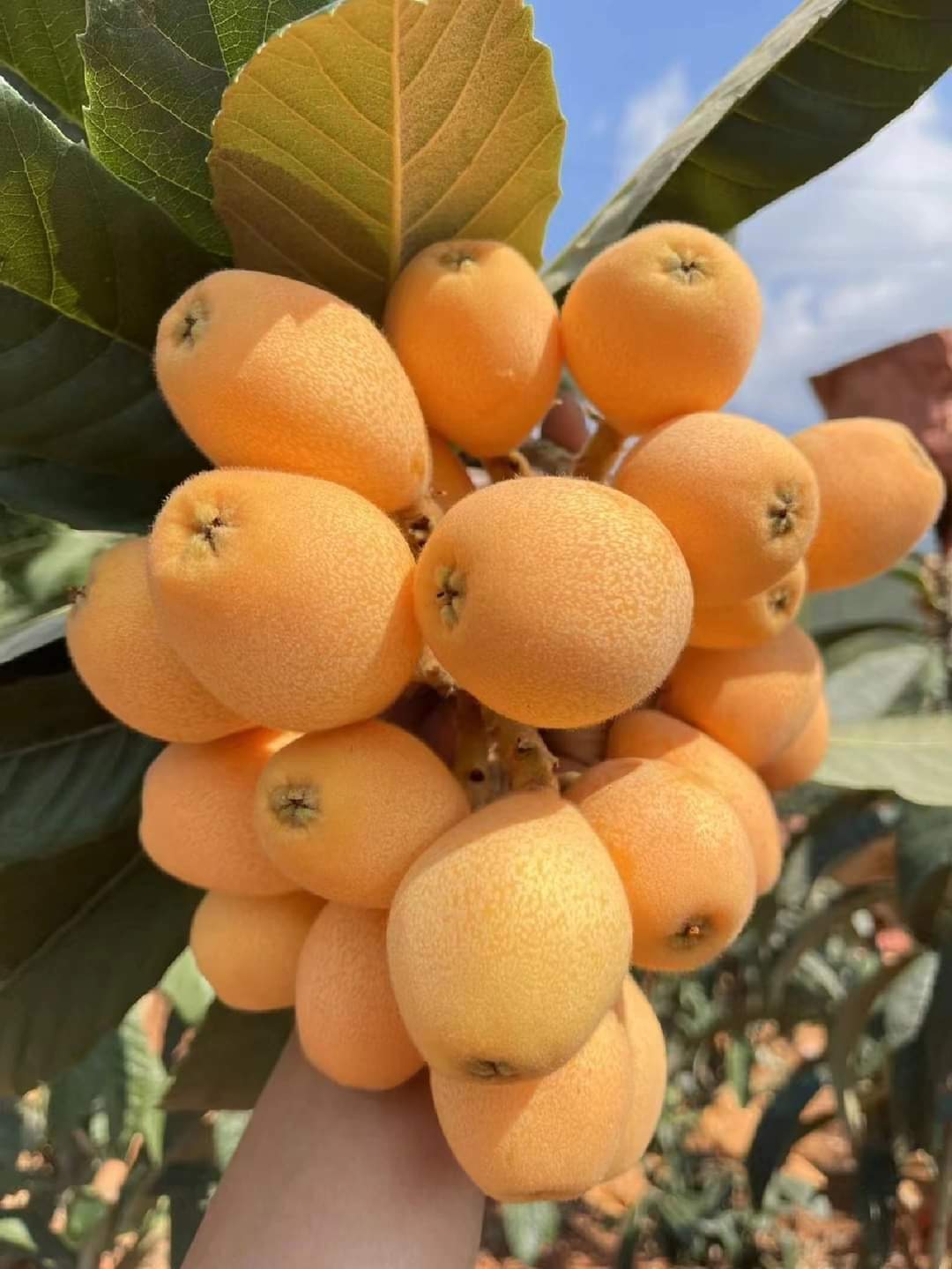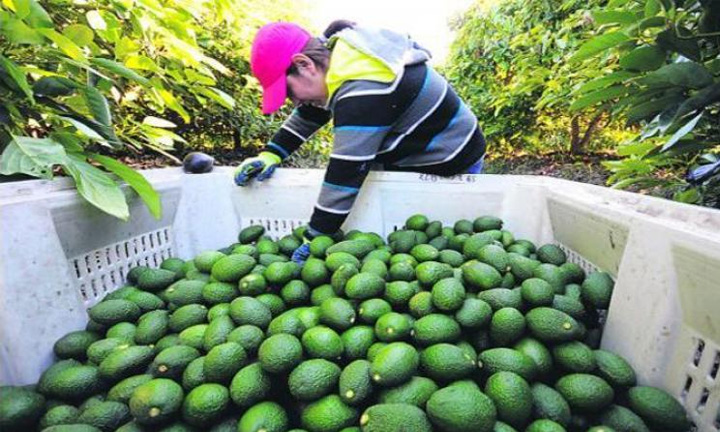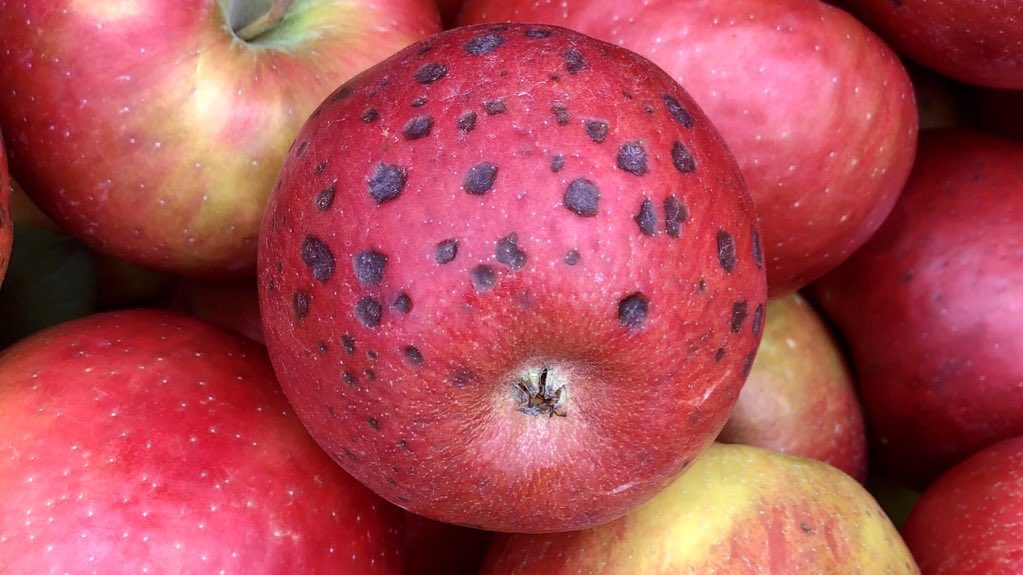EXTENSIVE GUIDE ON HOW TO GROW LOQUAT
Loquat is a fruit-bearing tree, native to southeastern china, but also cultivated in many other regions with suitable climates. The tree grows up to 5-10 meters tall and produces clusters of small and oval-shaped fruits. The fruit has a slightly tangy flavor and are often consumed fresh when ripe. The loquat tree is also valued for its ornamental qualities, with its glossy evergreen leaves and fragrant flowers adding beauty to gardens and landscapes. The leaves are sometimes used in traditional medicine for their potential health benefits, including as a remedy for
coughs and respiratory issues.
ECOLOGICAL RREQUIREMENTS
Climate: Loquat trees thrive in subtropical to mild temperate climates. They prefer regions with mild winters and hot, humid summers. They are sensitive to frost and may sustain damage if temperatures drop below freezing for extended periods. Ideal temperature ranges for loquat cultivation are between 10°C to 30°C (50°F to 86°F).
Soil: Loquat trees prefer well-draining, fertile soil with a slightly acidic to neutral pH (around 6.0 to 7.5). Sandy loam or loamy soils are ideal. Avoid waterlogged or heavy clay soils, as they can lead to root rot and poor growth.
Sunlight: Loquat trees require full sun to partial shade for optimal growth and fruit production. They typically do best in locations where they receive at least 6 to 8 hours of sunlight per day.
Water: While loquat trees are somewhat drought-tolerant once established, they benefit from regular watering, especially during periods of drought or when young. However, its crucial to avoid overwatering, as excessive moisture can lead to root rot.
Altitude: Loquat trees can grow at various altitudes, but they typically perform best at lower elevations where temperatures remain moderate.
- Spacing: When planting loquat trees, provide adequate spacing between individual trees to allow for proper airflow and sunlight penetration, which helps prevent disease and promotes healthy growth.
HEALTH BENEFITS
1. The fiber content in loquats helps promote satiety, which may aid in weight management by reducing hunger and preventing overeating.
2. The vitamin C content in loquats strengthens the immune system and helps the body fight off infections and illnesses.
3. The potassium content in loquats helps regulate blood pressure and maintain cardiovascular health.
4. Loquats are a good source of dietary fiber, which promotes digestive health by aiding in regular bowel movements, preventing constipation, and supporting a healthy gut microbiome.
5. Loquats are a good source of vitamins A and C, which are antioxidants that help boost the immune system and protect against cellular damage caused by free radicals.
LOQUAT YIELD PER ACRE
The yield of loquats per acre can vary significantly depending on several factors, including the specific cultivar grown, climate conditions, soil quality, cultural practices, and management techniques. Assuming a moderate yield of 200 pounds per tree and a spacing of around 15 feet by 15 feet, you might have roughly 194 trees per acre. In this scenario, the potential yield per acre could be around 38,800 pounds (or approximately 19.4
tons) of loquats per year.
COMMON DISEASES AFFECTING LOQUATS - Common diseases that affect loquat trees include fungal, bacterial, and viral infections. Here are some of the most prevalent diseases:
Anthracnose: Anthracnose is a fungal disease that causes dark, sunken lesions on leaves, twigs, and fruit. It thrives in warm, humid conditions and can lead to defoliation and fruit rot if left untreated.
Fire Blight: Fire blight is a bacterial disease that affects blossoms, shoots, and branches, causing them to turn black and die. It spreads rapidly during warm, moist weather and can severely damage loquat trees if not controlled.
Powdery Mildew: Powdery mildew is a fungal disease characterized by a white, powdery growth on leaves, shoots, and fruit.
Root Rot: Root rot is caused by various fungal pathogens and leads to the decay of roots, resulting in wilting, yellowing leaves, and eventual tree death. It is often associated with poorly drained soils and overwatering.
Blossom Blight: Blossom blight is caused by fungi that infect loquat blossoms, causing them to turn brown and die before fruit set. It can reduce fruit yield and quality if left unmanaged.
Leaf Spot: Leaf spot diseases cause dark lesions on leaves, leading to defoliation and reduced photosynthesis. They are caused by various fungal pathogens and can be exacerbated by high humidity and poor air circulation.
PESTS AFFECTING LOQUAT
Fruit Flies: Fruit flies are a common pest that lays eggs on ripening fruit, leading to the development of maggots inside the fruit. They can cause significant damage to loquat crops if not controlled.
Fruit Flies: Fruit flies are a common pest that lays eggs on ripening fruit, leading to the development of maggots inside the fruit. They can cause significant damage to loquat crops if not controlled.
Scale Insects: Scale insects are tiny, oval-shaped insects that feed on the sap of loquat trees, often clustering on the undersides of leaves and along branches. Heavy infestations can weaken the tree and cause leaf yellowing and premature leaf drop.
Whiteflies: Whiteflies are small, moth-like insects that feed on the undersides of leaves, sucking sap and causing yellowing, wilting, and premature leaf drop. They can also transmit viral diseases to loquat trees.
Caterpillars: Various caterpillar species may feed on loquat leaves, causing defoliation and reducing the tree ability to produce energy through photosynthesis.
Weevils: Weevils are beetles that feed on the buds, flowers, and developing fruit of loquat trees, causing damage and reducing fruit yield.





